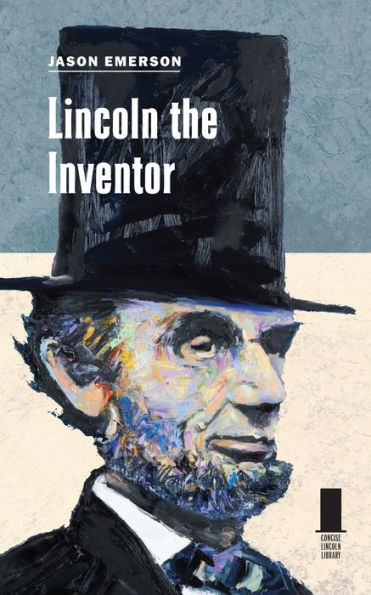Read an Excerpt
Abraham Lincoln’s Mechanical Mind
Abraham Lincoln’s invention and its subsequent patent always have been seen simply as a peculiar solitary event, a distraction from his politics, a historical footnote from the sideline of his life on his journey to greatness. Any books that mention the topic at all do so only perfunctorily. “The legend of Lincoln the prophet and martyr has bedimmed the genuine achievement of a human mind at work,” Roy P. Basler once trenchantly wrote. In truth, the story of Lincoln’s invention—which was the physical fruition of an intensely curious and mechanical mind—is a significant milestone on his journey to immortality. The story runs much deeper and is more multifaceted than has been credited and offers another glimpse into the workings of Lincoln’s much-examined intellect and character. Benjamin P. Thomas once wrote, “Behind the solemn, furrowed countenance of Abraham Lincoln was an inquisitive mind. It ranged over the abstract and the infinite, the absolute and the immediate. It was philosophical, and at the same time intensely practical. On the practical level Lincoln’s curiosity directed itself, among other things, to mechanical devices.” The story of Lincoln’s invention involves not just a boat journey, the whittling of some wood, and a trip to the Patent Office; the invention had ramifications for Lincoln’s life from the day his flatboat got stuck in 1831 till the day he died in 1865. It showed the mechanical genius of his mind and his way of thinking and analyzing, his penchant for expanding his learning and understanding disciplines other than politics, his fidelity to the political belief of internal improvements, his attempts at scholarly lecturing, and his admiration and fostering of invention and innovation as president. To understand Lincoln the inventor is to better understand Lincoln the man.
The story of Abraham Lincoln’s invention of “a device to buoy vessels over shoals” began with a trip down the river. In April 1831, twenty-two-year-old Lincoln, his stepbrother, John D. Johnston, and his cousin John Hanks hired themselves out to merchant Denton Offutt to take a flatboat loaded with hogs and barrels of bacon, pork, and corn from Sangamo Town, Illinois, to the market at New Orleans. Lincoln was an experienced boatman by this time (one reason he got the job), having worked plenty of jobs on the Ohio River, for the Portland Canal in Louisville, Kentucky, and Indiana, and as a hired hand on a flatboat to New Orleans in 1828. During the 1831 trip, while descending the Sangamon River, Offutt’s boat became grounded on the Rutledge milldam below the town of New Salem. With the front hanging out over the dam and the rear taking in water, Lincoln, wearing a pair of “mixed” blue jeans rolled up to his knees, “a hickory shirt and a Common Chip hat,” began “straining every nerve” to pry the boat over the dam, stated witness William G. Greene. As the flatboat continued taking on water, Lincoln directed the crew to unload the hogs onto an adjacent boat. Lincoln ran into the village, borrowed an auger from the cooper shop, and bored a hole in the end of the boat hanging over the dam. Some of the cargo barrels were rolled to the bow, causing the boat to tilt, the water to drain out, and the boat to float free. Every person in town showed up at the dam to watch the event, which lasted half a day and one night. Impressed by Lincoln’s operation on the dam, as well as his conduct during the entire journey to New Orleans, Offutt declared that he would build a steamboat for the Sangamon and have Lincoln as its captain. Offutt said he would build it with rollers underneath to overcome sandbars and runners underneath to run on ice, and “when Lincoln was captain by thunder she would have to go!”
Offutt never built the steamboat, but he did open a general store in New Salem in August 1831 and hired Lincoln as a clerk. It was during his nearly six years at New Salem that Lincoln’s self-reliant education took on a new, more expansive direction, and he honed his keen mind even sharper. Instead of being limited by few available books and little free time, as he was as a boy in Indiana, Lincoln made his own time to utilize numerous learning materials and to have educated men advise and mentor him. Lincoln, with less than one year of formal schooling, read every book and newspaper he could acquire or borrow, taught himself the techniques of surveying, kept abreast of local and national political issues, and began his self-study of the law, which would become his profession.
Seventeen years later, while Lincoln was a member of the U.S. House of Representatives, he and his family were traveling aboard the steamboat Globe over the Great Lakes from Buffalo, New York, to Chicago as they journeyed home to Springfield. Lincoln, the lone Whig Congressman from Illinois, had just finished giving political speeches across New England in support of General Zachary Taylor’s 1848 presidential campaign. As the Globe passed up the Detroit River during the final days of September, it came upon another steamboat, the Canada, which had run aground on Fighting Island. From the deck of the Globe, Lincoln watched as the Canada’s captain ordered his crew to collect all the empty barrels, boxes, and loose planks on the ship and force them under the sides to buoy the boat over the shallow water. No doubt this operation reminded Lincoln of his adventure at the New Salem milldam and got the old flat-boatman in him thinking of this common waterway problem. For the rest of his journey home, Lincoln considered how to construct a device to free stranded boats from shallow waters.
[end of excerpt]



